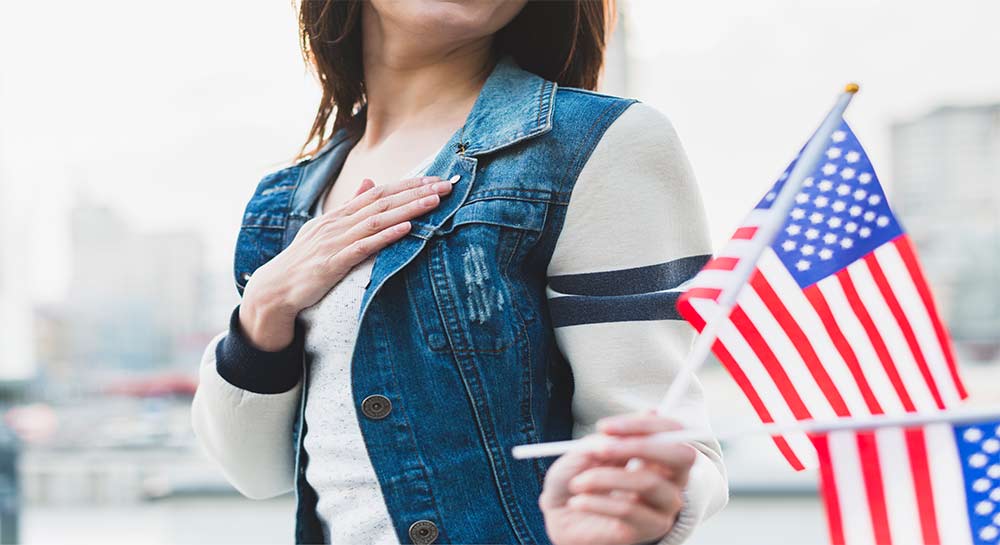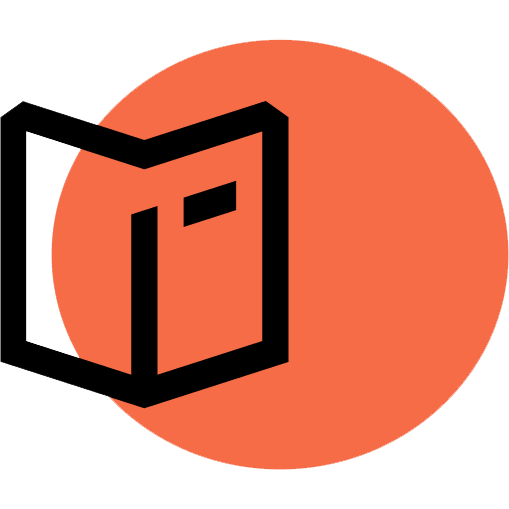Table of Contents

Filling out the DS-160 form is the first and most important step in your U.S. visa process, and mistakes here can cost you time, money, and even your trip. At Visa Library, we’ve seen every kind of error people make, from tiny typos to serious missteps that lead to rejection. This guide breaks down the most common DS-160 mistakes and shows you how to avoid them so your application stays strong from the start.
Incorrect or Inconsistent Information
One of the most common DS-160 mistakes is typing in the wrong personal details or giving answers that don’t match your documents. This includes things like misspelling your name, mixing up birth dates, or giving a different passport number than the one in your actual passport. Even small errors can cause major delays or force you to redo your application.
If your DS-160 form says one thing and your documents say another, the consular officer may think you’re hiding something or being careless. That’s not the impression you want to make.
How to fix it:
Double-check every answer before you submit. Compare it line by line with your passport, visa invitation (if any), or school/employer letters. If something doesn’t match, update it. If you’re unsure, ask someone, or leave it blank only if it’s optional.
Rushing Through the Form
Filling out the DS-160 form usually takes around 60 to 90 minutes. If you rush, you’re more likely to make errors, skip questions, or forget to save your work. This is one of those DS-160 mistakes that sounds simple, but it’s a big reason why forms get rejected.
The system also times out after 20 minutes, so if you leave it open and walk away, you could lose your progress. Starting over isn’t fun.
How to fix it:
Take your time. Set aside at least an hour so that you won’t be distracted. Save your work after every section. Use the “Save” and “Retrieve” options so you can come back to it if needed. Rushing won’t speed up your visa; it’ll slow it down.
Not Saving the Confirmation Number
Once you submit the DS-160 form, you’ll get a confirmation page with a barcode and a number. This number is your proof that you submitted the form, and you’ll need it to book your visa appointment. If you lose it, you may have to start over or go through extra steps to recover it.
How to fix it:
After submitting, save the confirmation page right away. Print it, email it to yourself, and save a PDF copy. Don’t just rely on your browser history or memory.
Using Inaccurate Photos
The photo upload section of the DS-160 form has very strict rules. The photo has to be recent, clear, the right size, and follow official U.S. visa standards. If your photo is blurry, too small, or has the wrong background, the system might reject it, or you may have issues at your visa interview.
A low-quality or wrong-size photo is one of the sneaky DS-160 mistakes that many people don’t realize until it’s too late.
How to fix it:
Use a professional visa photo service or an online tool that follows U.S. standards. Make sure the photo is taken within the last 6 months. If the upload fails, bring a printed copy to your interview that meets the guidelines.
Omitting Required Information
Leaving out information that the form requires is another common DS-160 mistake. The system may let you submit the form, but missing details could cause issues later, especially if the consular officer asks about something that’s not on your form.
Some people leave fields blank by accident, others don’t understand what’s being asked. Either way, it slows things down.
How to fix it:
Don’t skip anything unless the field is clearly marked as “optional.” If a question doesn’t apply to you, write “N/A” (not applicable) instead of leaving it blank. If you’re unsure how to answer, look it up or get help before submitting.
Submitting the Form Too Early or Too Late
Timing matters more than most people think. One of the most overlooked DS-160 mistakes is submitting the form way too early or too close to your interview. If you submit too early and your travel plans change, you’ll need to start over. If you submit it too late, you might not get an interview date in time, or the system might not link your form to your appointment correctly.
The DS-160 form should reflect your latest travel info. Submitting it too far ahead or at the last minute puts your visa at risk.
How to fix it:
Submit your DS-160 form only when you’re sure about your travel plans and within a reasonable window before your interview, ideally 4 to 8 weeks before your trip. Check your embassy’s processing times and appointment availability first.
Incorrect Visa Classification
Choosing the wrong visa type when filling out the DS-160 form is a serious mistake. It can lead to a denial or a wasted appointment. For example, applying as a tourist (B-2) when you actually need a student visa (F-1) or choosing the wrong work visa category will confuse the consular officer and likely delay your process.
This is one of the DS-160 mistakes that’s easy to make, especially if you’re not familiar with visa categories.
How to fix it:
Before you start the DS-160 form, double-check your visa type. Look at your school’s or employer’s documents or read the embassy’s visa category guide. If you’re unsure, ask a visa consultant. Getting this part wrong can undo everything else.
Providing False or Misleading Information
Lying or bending the truth on your DS-160 form can lead to a visa denial and sometimes even a ban from future applications. Whether it’s about your job, income, past travel, or anything else, the U.S. government checks details closely.
How to fix it:
Always be honest. If you think the truth might hurt your case, get advice—but don’t lie. It’s better to explain a real issue than to be caught in a false one. If you make a mistake, you can start a new DS-160 form before your interview.
Incomplete Travel History
The DS-160 form asks about your previous international travel. Leaving this section blank or listing just one or two trips when you’ve taken many can make it look like you’re hiding something or being careless. This DS-160 mistake may seem small, but it gives a bad impression during the interview.
How to fix it:
List all major trips in the last five years. You don’t need to include weekend getaways but do include travel for work, school, or long holidays. If you can’t remember exact dates, estimate as closely as possible.
Ignoring Financial Support Details
The DS-160 form asks how you’ll pay for your trip. Leaving this blank or giving vague answers can raise red flags. Consular officers want to know that you can afford the trip and won’t stay in the U.S. illegally to earn money. This DS-160 mistake can lead to extra questions or a flat-out denial.
How to fix it:
Be clear. Say if you’re funding the trip yourself, if your family is helping, or if your school or employer is covering costs. Make sure your documents (like bank statements or sponsor letters) match what you write on the DS-160 form.
Uploading Wrong or Low-Quality Documents
One of the easiest DS-160 mistakes is uploading blurry, incorrect, or badly formatted documents. The system might accept them at first, but the embassy can still reject them later. This includes things like passport scans, photos, or supporting proof. If your documents are cut off, unreadable, or in the wrong format, your application could be delayed or, worse, denied.
How to fix it:
Only upload clear, high-quality files. Follow the U.S. embassy’s size and format rules. Use PDF or JPG when needed, and double-check that everything is readable. If the photo upload fails, bring a printed copy that meets visa photo rules to your interview.
Inconsistencies Between DS-160 and Supporting Documents
This is one of the more serious DS-160 mistakes. If the info on your DS-160 form doesn’t match your passport, job letter, or school documents, it’s a problem. Consular officers compare your form with your paperwork. If they see different names, dates, or job titles, they might question your whole case.
How to fix it:
Before you submit the DS-160 form, lay out all your supporting documents and compare them side-by-side. Make sure everything matches spelling, dates, locations, names, and titles. Don’t guess or assume it’s close enough.
Missed Deadlines for Submission or Interview Booking
Waiting too long to submit your DS-160 form or book your interview is a major and stressful DS-160 mistake. Embassy slots fill up fast, and in some countries, there are long wait times. If you submit late, you might miss your travel window or be forced to reapply.
How to fix it:
Submit your DS-160 form at least 4–6 weeks before you want to travel. Then, book your visa appointment right away. Check wait times for your embassy regularly, and don’t assume you can get in next week. Plan early.
Not Reviewing Country-Specific Requirements
This DS-160 mistake comes from skipping the fine print. Every U.S. embassy has its own rules. Some require extra documents. Some need translated papers. If you ignore your local embassy’s instructions, you could show up with the wrong materials and get turned away.
How to fix it:
After completing your DS-160 form, go to your local embassy’s website and read their checklist. Follow their exact instructions, not just general advice you find online. Requirements change from place to place.
Failing to Prepare for DS-160-Linked Interview Questions
Whatever you write in your DS-160 form can come up in your visa interview. If your answers in person don’t match what’s on your form, it looks suspicious, even if it was an honest mistake.
How to fix it:
Review your full DS-160 form before your interview. Read your answers out loud and make sure you remember what you wrote. Practice explaining things like your travel plans, your job, or your finances in a clear, simple way.
Leaving Employment or Education Gaps Unexplained
The DS-160 form asks about your work and education history. Leaving time gaps, like months or years with no activity, can raise red flags. Officers want to know what you’ve been doing and why. This DS-160 mistake looks like you’re hiding something.
How to fix it:
Be honest about your timeline. If you were unemployed, say so. If you were traveling, caregiving, or studying informally, write it down. Gaps are okay—what matters is that you explain them.
Skipping Optional Fields That Could Support Your Case
Some fields in the DS-160 form are marked “optional.” But skipping them when they could help your case is a missed opportunity. For example, not listing family in the U.S. or leaving out travel companions may raise questions later. This DS-160 mistake won’t break your application but won’t help it either.
How to fix it:
If an optional field applies to you, fill it in. The more complete your DS-160 form, the stronger your case. Don’t skip helpful details just to finish faster.
Using the Wrong Embassy or Consulate Location
This is one of the easiest DS-160 mistakes to avoid, but people still make it. When filling out the DS-160 form, you have to choose where you’ll attend your interview. Choosing the wrong location, one that doesn’t accept your application, or where you don’t live can lead to delays or rejection.
How to fix it:
Pick the embassy or consulate that matches your current country of residence. If you live abroad, choose the U.S. post nearest you that handles nonimmigrant visas. Make sure your DS-160 form matches your appointment location.
Let’s Recap
The DS-160 form might look simple at first glance, but every answer you give plays a part in your visa approval. One wrong detail or missed section can cause delays—or worse, a denial. Take your time, review everything twice, and always match your answers with your supporting documents.
If you’re afraid of making the DS-160 mistakes, don’t take chances and use Visa Library’s FREE Consultation Services to get expert help before you submit.
FAQ about Common DS-160 Mistakes
What mistakes should be avoided in DS-160?
Avoid incorrect personal info, choosing the wrong visa type, leaving out details, uploading bad photos, and not matching your form to your documents.
What is a material mistake on DS-160?
A material mistake is an error that affects your visa decision, like a wrong visa category, false personal info, or hiding travel history.
Can I correct DS-160 after submitting it?
You can’t edit a submitted form, but you can fill out a new DS-160 form and use the new confirmation number to book or update your appointment.
Can DS-160 be submitted twice?
Yes, you can submit the DS-160 form as many times as needed. Only the most recent confirmation number is used for your visa appointment.
- Author
- Max-B.
- June 26, 2025

Sign Up to Online Course
Related Articles

US EB‑5 Investor Visa Interview Questions
The EB‑5 visa interview is a key step in the U.S. immigration process. At this stage, the consular officer checks

US O‑1 Visa (Extraordinary Ability) Interview Questions
The O‑1 visa lets people with special skills work in the United States. After USCIS approves your petition, the last

German Student Visa Interview Questions
Students must attend a visa interview before they study in Germany. The officer checks if the student is ready for

